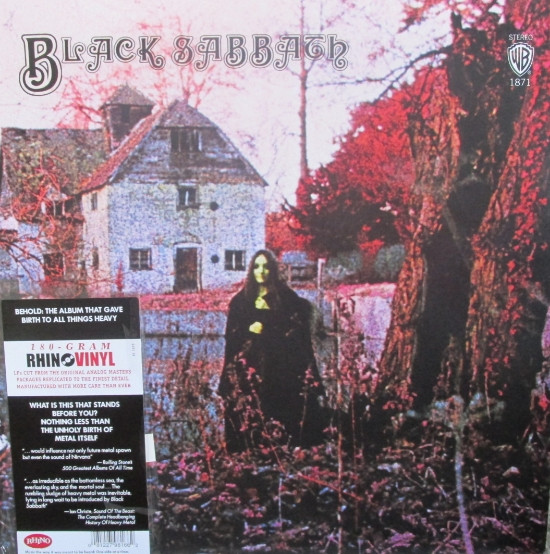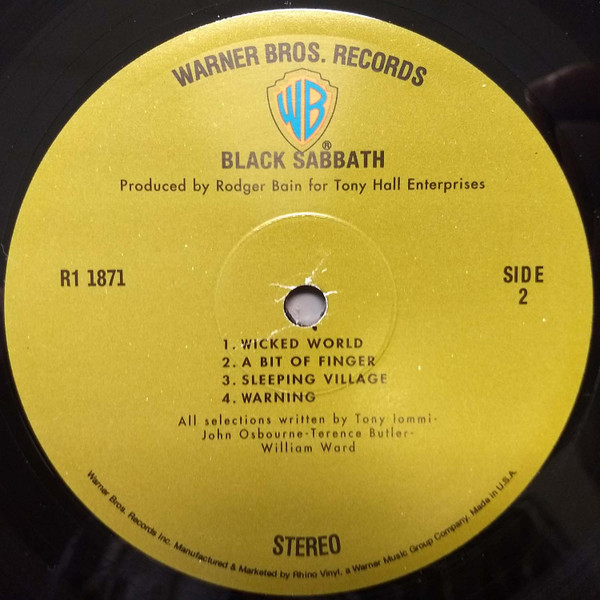
Maybe there’s something about working in a haunted castle that brings out the best in musicians. Written in the dungeon at Clearwell Castle in the Forest of Dean, Gloucestershire, England, Sabbath Bloody Sabbath is arguably Black Sabbath’s masterwork. Sure, the band members were occasionally spooked by the female ghost that reportedly occupied the premises, but that’s a small price to pay for greatness.
Released in the fall of 1973, Sabbath Bloody Sabbath was, at the time, the band’s most musically intricate and lyrically advanced album—the sound of four musicians maturing as musicians and writers, even while drowning in the booze and cocaine that would prove their undoing. “Living just for dying, dying just for you,” bassist Geezer Butler writes in the immortal title track and album’s sole single. It’s an acknowledgement of the band’s self-destructive lifestyle, brought on by the pressures of fame, success and—let’s face it—the band’s own choices.
It’s a theme that Butler and his bandmates would echo on the underrated banger “Killing Yourself to Live”, which the bassist wrote while hospitalised for a kidney ailment brought on by excessive partying. The title track riff, though? It’s unstoppable. Guitarist Tony Iommi has called it “the riff that saved Black Sabbath” because it was the first thing he came up with for the album after suffering an extended and uncharacteristic bout of writer’s block. Meanwhile, Ozzy’s proclamation of “You bastards!” assaults the assaulters, the corporate overlords and quasi-religious snake oil salesmen who manipulate mankind for sport and profit.
Elsewhere on Sabbath Bloody Sabbath, the hugely hypnotic “A National Acrobat” and meticulously bombastic “Spiral Architect” explore, respectively, the intricacies of conception and DNA. Butler may have told Sabbath biographer Mick Wall that the former is “a song about wanking…from the sperm’s point of view,” but lines like “I’ve lived a thousand times, I found out what it means to be believed” reveal a deeper, more philosophical perspective. “Fluff”, meanwhile, is the longest and most complex of the instrumental pieces that Iommi had begun including on Sabbath albums, starting with 1971’s Master of Reality (the title is a nod to DJ Alan “Fluff” Freeman, one of the few DJs to play Sabbath on the air back in those days).
The infectious and proggy “Sabbra Cadabra” features some impromptu lines from Ozzy, apparently based on inane voice-over dialogue from the German porn he was into at the time. The song also includes extensive piano and mini-Moog embellishments, courtesy of Yes keyboard wizard Rick Wakeman; as legend has it, he played on the track in exchange for a case of beer. Ozzy later declared Sabbath Bloody Sabbath to be the band’s “final record”, even though they recorded three more with him before giving him the sack. That statement may sell 1975’s Sabotage a bit short—but it says much about the record at hand.
Tracklisting
| Position | Title |
|---|---|
| A1 | Black Sabbath |
| A2 | The Wizard |
| A3 | Wasp / Behind The Wall Of Sleep / Bassically / N.I.B. |
| B1 | Wicked World |
| B2 | A Bit Of Finger / Sleeping Village / Warning |
Apple Music
Release Images
Release Information
| Key | Value |
|---|---|
| Wikipedia URL | https://en.wikipedia.org/wiki/Forbidden_(Black_Sabbath_album) |
| Format | 1× Vinyl (180 Gram) LP, Album, Reissue, Stereo |
| Label | Rhino Records (2) |
| Catalog Number | R1 1871 |
| Notes | 180 gram black vinyl Rhino reissue, cut from the original analog masters. This release is very similar to the 1970 Warner Bros. Records release [r=2011391]. “Rhino Vinyl” is only mentioned in a small font on the vinyl labels. The reissue year 2010 is not visible anywhere; only 1970. Record housed in plain poly-lined inner sleeve. Barcode appears only on hype sticker. Jacket is Tip-On. Made in U.S.A. on labels. Printed in U.S.A. on spine. This release is not to be confused with the nearly identical [r=7286544] which has different center labels. |
| Discogs URL | Black Sabbath - Black Sabbath |



